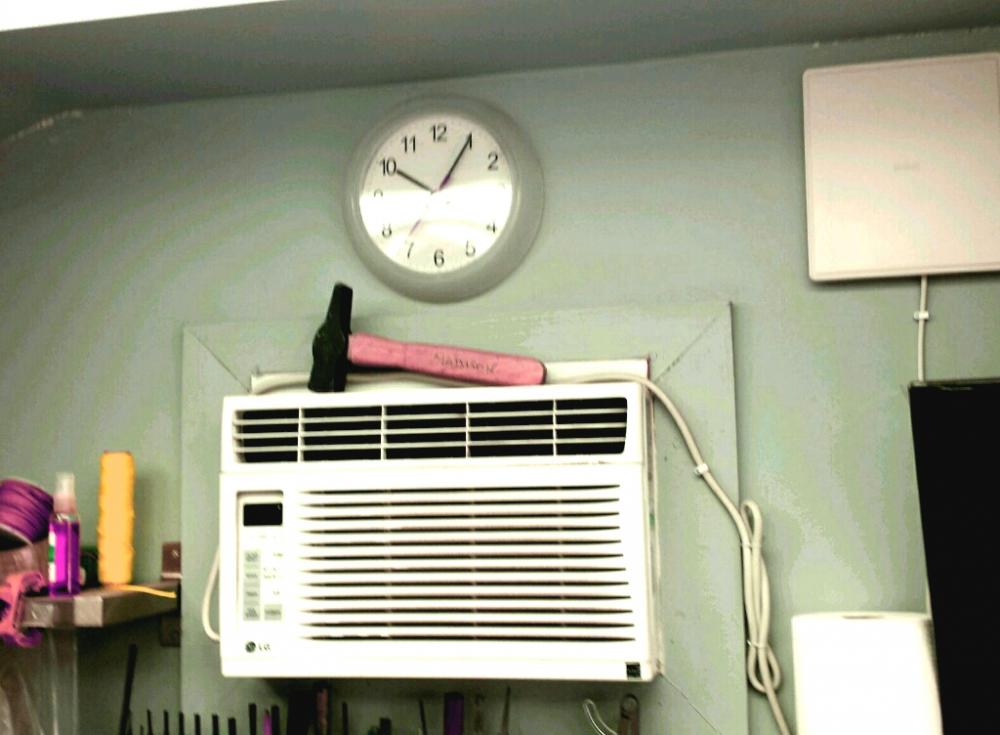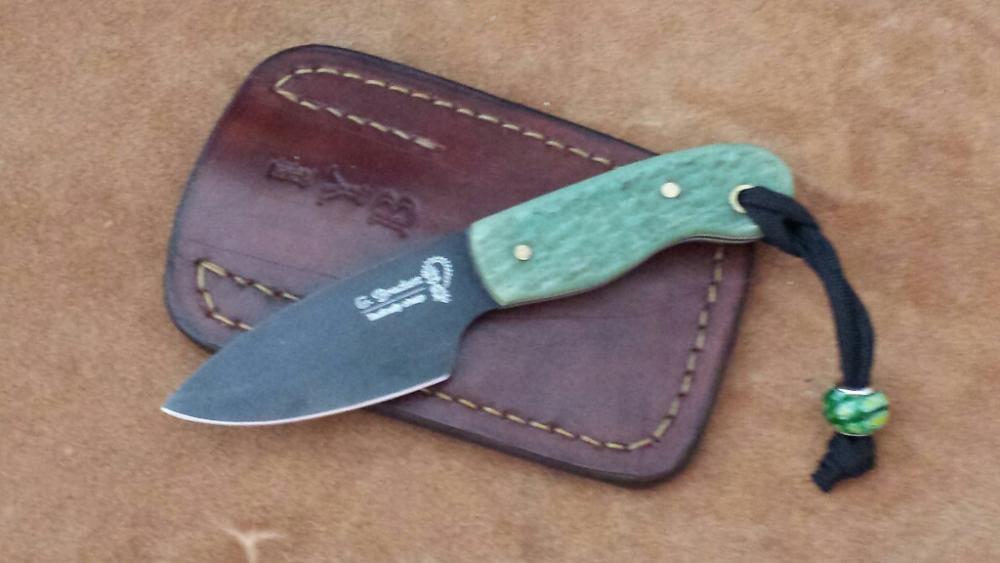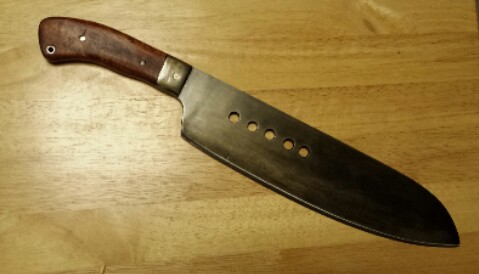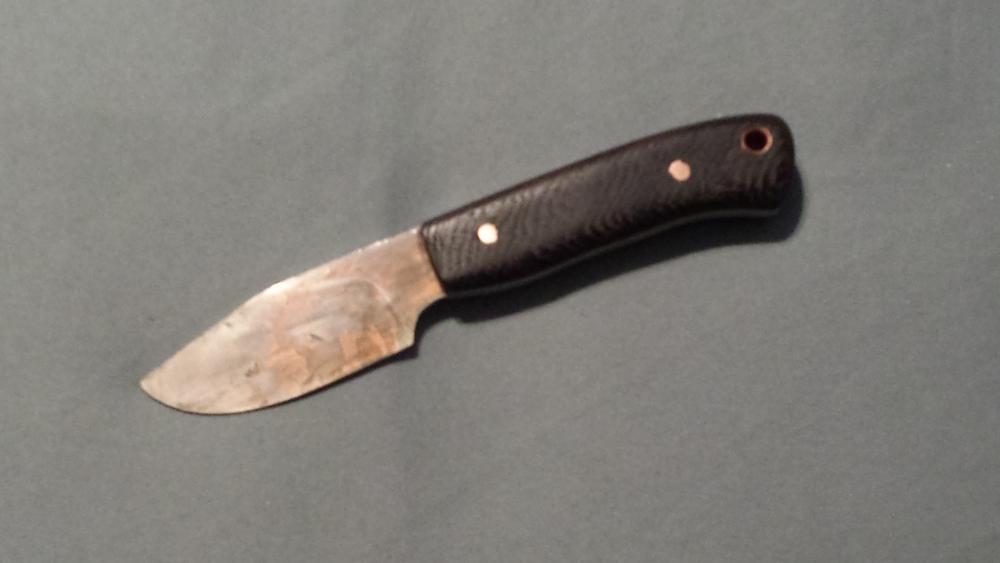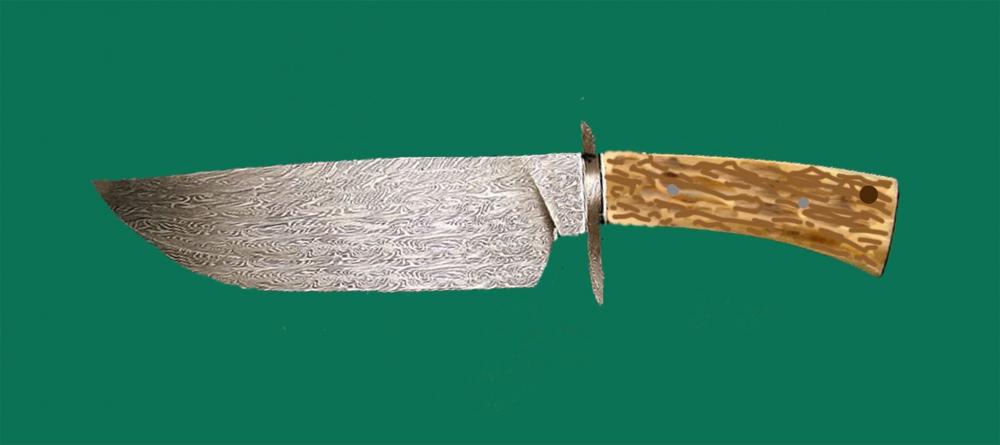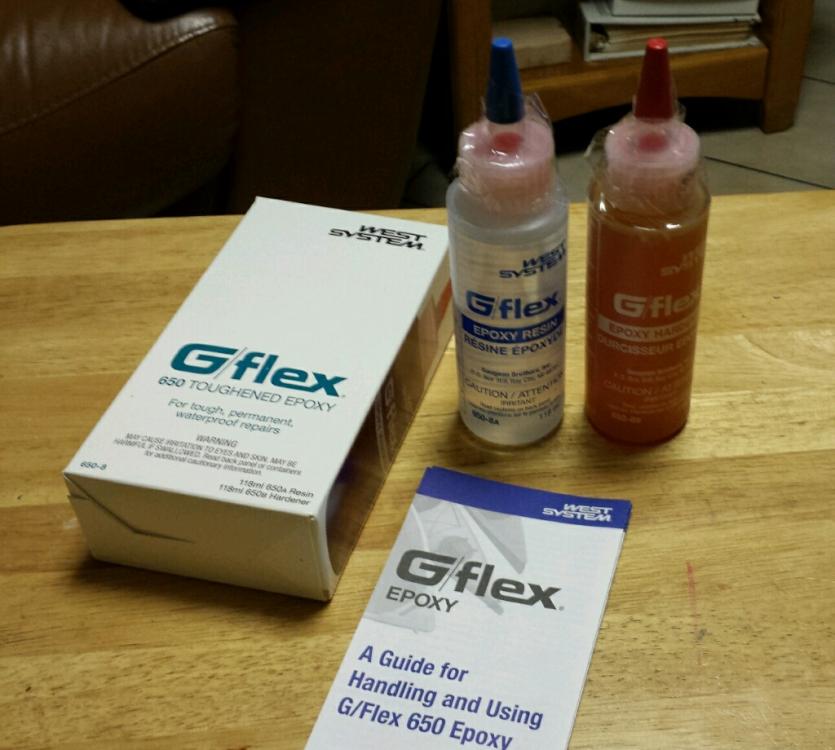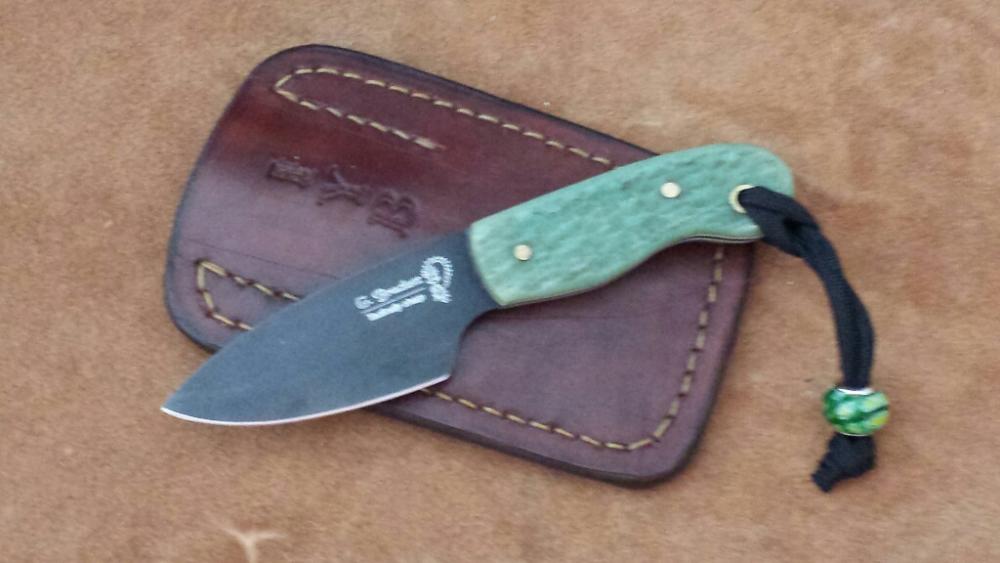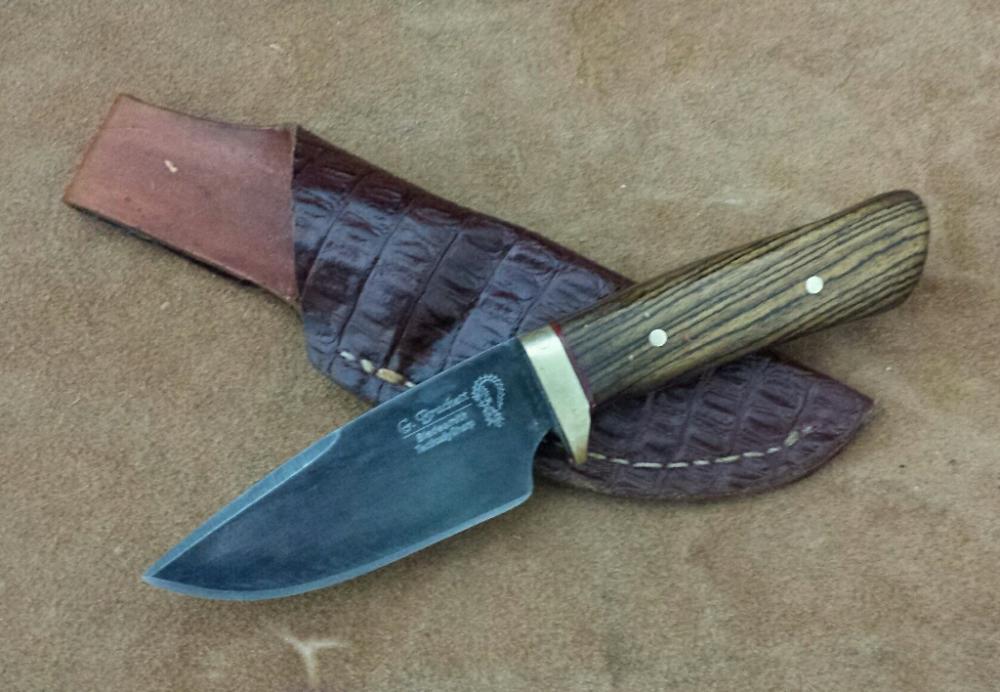-
Posts
53 -
Joined
-
Last visited
Content Type
Profiles
Forums
Articles
Gallery
Downloads
Events
Everything posted by TacticallySharp
-
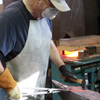
What does a grandfather do when a grandson wants to make a knife
TacticallySharp replied to MotoMike's topic in Knife Making
Grandpa does what he has to do... I promised my grandkids they could forge their own knives at the age of 10. One is there this summer, and the other next year. I got them a hammer with their names on them to start with... -
Very nice knife. One lucky brother in law. I've made knives for my brothers in laws, and my son in law. Lots of fun to see the smile on their faces when they received them... Made some of these for my sister' too!
-
A lot depends on how the user wants to hold it. Go buy a couple 7 to10 chef knives at wally world, and ask her to try them for a few days each. Then based on her anwser make one the mades what she likes. I find that edge needs to start about a 1/4" below the spine, down to about 0° at the cutting edge. I then grind the edge off and create a micro bevel. Then sharpen it on both sides. That has worked for me in the past in 85% of the times. This one has a 10 inch blade, and a 6.5 inch hand. Plent of space on the handle to safely use it for all cutting need. A country styled with a forced patina to show and aged knife so his clients would see what their eyes said was an old cowboy cooking tool. Great for cutting meat, and veggies with just a cleaning and applying som vegetable oil.
-
I forge a bevel, ricaso, and the handle on mine. If there is a taper I forge it too. I forge 90% to the finished dimensions. I leave the knife edge at the thickness of a nickel when taking it to critical temperture, and for the quenching process. Sand it down to a dime before tempering. I also use Parks 50 as my quenching oil. On my stock removal knives that are thin, less than 1/8," I leave them flat, and grind after the total hardeness, and tempering rocess. Especially kitchen knives. This has worked for me very well with all the high carbon steels I normally use. 1080,1084,1085,1075, 5160. Remember that 1080, and 1084 are very forgiving steels to harden and temper.
-
Check the ABS YouTube channel. They have Good information!!!
-
I've purchase a lot from them In the pass 7 years. Nover had a problem with them. Great service and,friendly folks
-
-
I've used 8ncrv2 it is an enhanced 5160. I get mine from NJ Steel Baron. More carbon than 5160 and some other stuff. NJSB has a spec sheet on there site.
-
I use 9 pices of 1084 steel one on each and two in the middle. The 15N20 is 2 layers on side between the outside one and the inside two of 1084. 6" long pieces for me works vest.
-

Should I put a wooden handle on this knife?
TacticallySharp replied to StumpingIron's topic in Knife Making
I would use G10 and that would waterproof it for use in the kitchen. -
Make a drop point. Great utility and hunting blade style. Hammer what you think is the edge. The point of the top of the knife will be fromedthis large knife was made this way. Makes a greatt hunter with a 3.78" blade.
-
I would use G10 liners and corby bolts to beef up the stabilized burl. Also use GFlex epoxy. While slow to cure it has some of the best adhesion properties I've found to date.
-
I'm both a buyer, and a maker. I have sold knives from my website, in store display, Facebook, and word of mouth. Most of my clients refer others to me. I try to make my products as finish looking as possible. If I put my mark on it, it's the best I can make. Most of my work is sold by the time I post it. If I see the problem, I fix it. If it can't be fixed it goes into my oops box. If later it can be corrected it will become a gift for the family.
-
This is in the realm of our 5160 state side. Just a little tougher it seems. You can make just about any knife with the correct heat treat procedure. It would really be good for large choppers and hard use edged tools. A mountain bowie would be a nice choice for it. I like this style.
-
I use GFlex marine epoxy as my adhesive, and small Corby Bolts for mechanical attachment. On kitchen knives I prefer stabilised wood or man made materials for my handles. I use the same on most of my other knives too.
-

Mini Karambit from "Agricultural Steel"
TacticallySharp replied to norrin_radd's topic in Knife Making
The Sharpmaker is a great tool. I have one in the shop and another in my travel bag. Nice knife! -
I use a method were I have a rate I want to earn for my time, add the cost of materials, plus supplies. With a clock on each end of my shop I carefully track the time spent on each item I craft. I multiply time by rate plus materials, and supplies. Add on the percentage for profit. My knives range between $150-$1,500 depending on model and materials used.
-

Thinking 'out loud'/Self defense for the ladies
TacticallySharp replied to Michael Cochran's topic in Knife Making
These are the two models I've sold the most of to women. My daughters, sisters, niece, and wife each have on also. They have all received knife skills training from professional instructors. The smaller one in the pocket/purse sheath is my best seller. 2.25" blade. It's a hide away that is very sharp and just large enough to be comfortably carried and handled. They are all trained to walk away if they can. Most of them also have had and practice defensive handgun techniques. -
Most hardware stores carry acetone. Even Walmart has it next to the paint thinner. In my travels larger grocery stores carry dry ice. The method works better than no cryo. A lot of folks expect a major difference. I only get a couple of points from it. I seem to get a deeper hardening more than a higher scale number.
-
I just went back and looked at her point. It was deformed. Her knife handle was very poorly executed and wasn't very easy or safe to use. I felt that both hers and the one that wouldn't cut should have been eliminated. Not sure just how much experience either of them had. I didn't particularly care for that episode. This week should be very interesting, Master Smith Burt Foster will be on it. I would guess he will win it. He has won the Smokey Mountains Hammer-In Bladesmith Battle several times since they started it years ago.
-
I drill after anealing. I regularly use cobalt drill bits. If I find it hard to drill holes then I switch to carbide bits. Those have always worked in hardened steel for me. I keep 4 of each size I normally use in my box.
-
Not really a gardening tool. Basically a short sword used in that part of the world in the old days. Most I have seen have 12 to 16" blades on them. Being your first edged tool and the time it will take. I would suggest first making a few smaller tools then, make this one. You will end up with a nicer final product that way.
-
I've made a couple a few years back. Used Aldo's 1084. When I blue backed them I found that to get the flex I had to take it to gray. They are still in service and I haven't gotten one back.
-
1084, 1075, 5160 (leaf spring metal) can all be purchased new. New Jersey Steel Baron, USAKnifemaker . com, Jantz, Pop's, and others sell it. Sheath making is an art to it's self. Which can take as much planning and effort as making the knife. O1 is a steel that can be found locally in most places. Higher priced as normally it's precision ground and a big harder to heat treat.
-

new grinder...help with belts
TacticallySharp replied to dps9999's topic in Finish and Polish for Knives
I mainly forge very close to shape also. I profile with a 40 ceramic and cleanup prior to Heat Treat with a 120 and 220 ceramic. After HT I sat with a ceramic 220 and work through 4 different gators. Getting finer with each. I sometimes use a Scott Brite belt for a satin finish. I buy my buys currently from Phoenix Abrasives. Greg has a good selection of quality belt at a reasonable price. When I started I used cheap belts. I found that quality belts not only lasted longer but, cut cleaner and created less heat. Buy the best you can afford is a very true statement. You will save in the long run.

